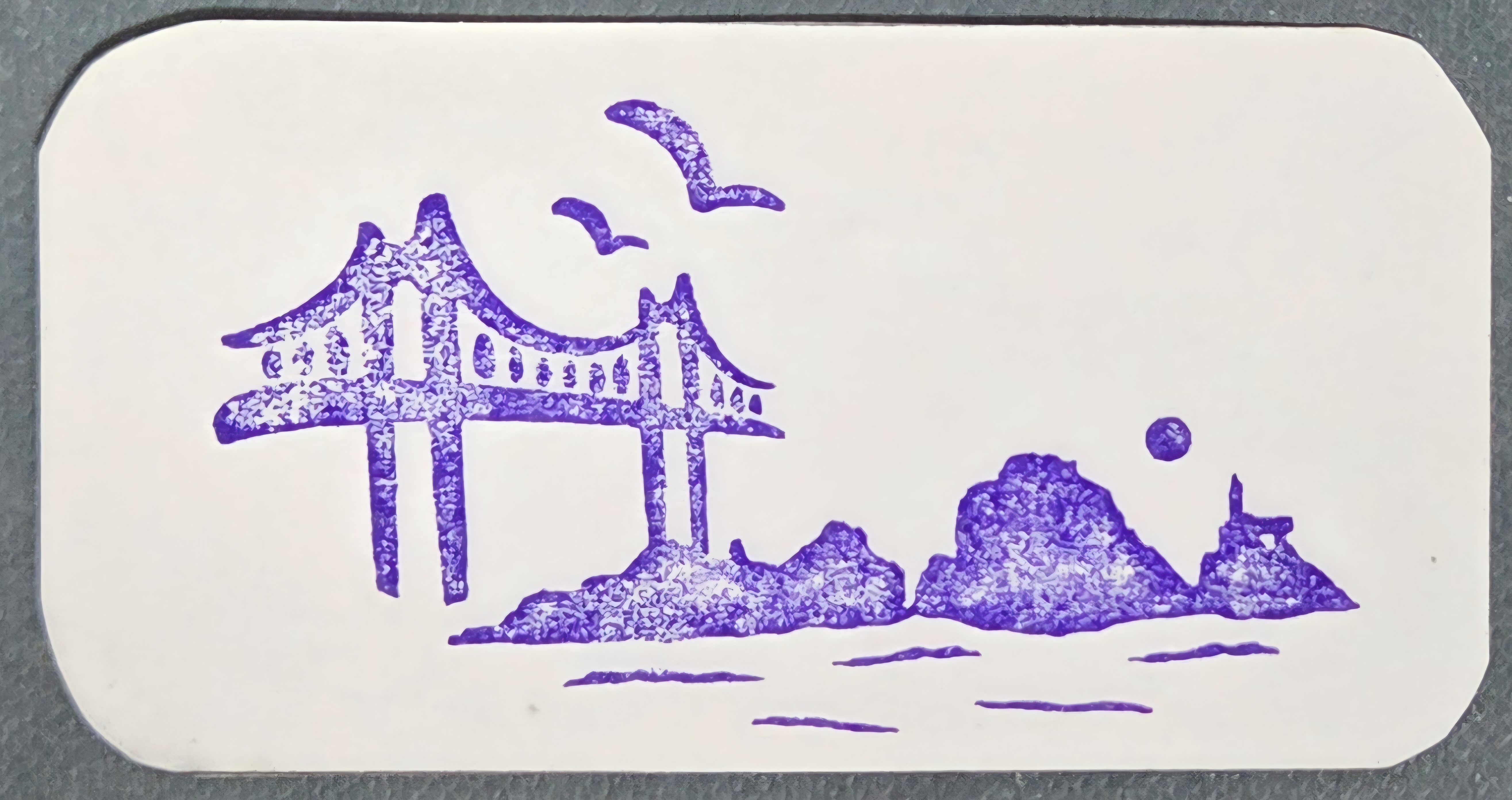부산이 확실히 세계화의 한 부분에 포함된것은 태종7년(1407년) 김해의 내이포와 부산포가 개항 하면서 부터 이다. 부산이 중심적 역할을 하기전 남포가 있던 김해와 합포가 있던 마산이 일본과의 교역의 중심지 였다.
12~13세기까지 도청역할을 했던 김해는 일본과의 무역을 관리하던 중심지 였다.
김해는 남포가 있어 고려시대 부터 이용되었다. 김해가 해양활동이 활발했던 것은 낙동강 하구의 지리적 위치 때문 이었다. 낙동강 하구의 김해만은 조수간만의 영향을 적게 받는 명지도, 취도 는 항구로서 유리한 입지조건을 갖추었고 취량이라 불리는 만의 북쪽은 수심이 깊어 선박의 밤샘정박이 가능했다. 김해를 거쳐 낙동강을 따라 활발한 해상활동이 이루어졌고 해상의 관문인 이유로 고려후기 왜구의 약탈로 전란이 잦았다.
지금의 강서구 녹산동 구랑마을에 객관이 있었다. 13세기~14세기 중후반 활동이 중단 되었다. 1400년대 부산포와 내이포(김해)에 왜관을 설치하면서 왜인들을 통제하기 시작했다. 1418년 염포(울산)이 추가 되었다. 이후 삼포왜란이 발생하고 1547년 부산포 왜관만 남게 된다.
17세기말 일본에서 부산왜관으로 오는 교역선은 매월 4~5회, 연간 60회에 이른다. 대부분 쓰시마(대마도)에서 출발했고 5월을 제외하고 매월 2~4척의 배가 들어와서 1~2달 이상을 머물렀다.
우리가 찾는 40계단은 한국전 당시의 위치가 아니다. 원래의 40계단은 1953년 11월 30일 부산역전 대화재로 붕괴되었다. 1902년~1908년 북항매축공사를 위해 대청로와 복병산을 절개하여 토사를 가져왔다. 초량과 용두산공원 방면의 일본인거류지를 도로망으로 연결하고 경부선철도를 연결하기위해 영선산 착평공사가 시작되었다. 40계단은 복병산과 영선산을 절개하면서 생긴 급경사를 계단으로 만든 것이다. 계단이 만들어 지면 축대도 만들어 진다. 대표적인 곳으로 초량 이바구길 168계단, 좌천동 190계단, 범천동 호천마을 180계단, 감천문화마을 148계단 등이 있다.
비가 많이 오면 축대가 무너지는 사고가 많아서 인명피해도 빈번했다. 1945년 일본이 패망하고 이들이 일본으로 귀국한뒤, 1945~1947년 까지 일본에 가 있던 동포들이 귀환한다. 이 시기 약 200만명 정도가 돌아 왔고 이들의 70%는 부산에 정주 했다.
일제강점기 부산의 인구는 대략 40만 이었다. 1955년 한국전쟁 후 인구는 100만을 넘었다. 기반시설이 없는 상태여서 화재나 위생문제로 인한 질병으로 힘들었다. 1961년 5.16 군사 쿠데타 이후 부산의 인구는 급증했다. 1963년 직할시로 승격되면서 섬유, 고무, 합판 산업이 주를 이운다. 1972년 인구 200만, 1973년 300만에 이른다. 1970년대 전반만 해도 부산의 주택보급율은 50%를 겨우 넘겼다. 동구 안창마을은 해방전에 4~5채의 농가가 있었다. 마을이 생기기 시작한것은 1960년대 부터다. 1978년 당시 230가구 500세대로 마을 전체가 산림청 소유의 국유지 였다.
Busan became a part of globalization in the 7th year of King Taejong’s reign (1407) when Naeipo in Gimhae and Busanpo were opened as ports. Before Busan took on a central role, Nampo in Gimhae and Happo in Masan were the main centers of trade with Japan.
Until the 12th and 13th centuries, Gimhae served as the administrative center and managed trade with Japan. Gimhae had been used as a trade hub since the Goryeo period due to Nampo. Its active maritime activities were attributed to its geographical position at the mouth of the Nakdong River. Gimhae Bay had advantageous harbor conditions, as Myeongji Island and Chwido were less affected by tidal changes. The northern part of the bay, called Chwiryang, had deep waters suitable for overnight anchorage. Trade flourished along the Nakdong River through Gimhae, but due to its strategic importance as a maritime gateway, the area suffered frequent raids by Japanese pirates (Wako) during the late Goryeo period.
In Gurang Village, Noksan-dong, Gangseo-gu (present-day Busan), a guesthouse (Gaekgwan) was located, but operations ceased between the mid-13th and late 14th centuries. In the 1400s, Japanese residences (Waegwan) were established in Busanpo and Naeipo (Gimhae) to regulate Japanese traders. In 1418, Yeompo (Ulsan) was added as another Waegwan site. However, after the Sampho Waeran (Japanese Insurrection of the Three Ports), only the Busanpo Waegwan remained by 1547.
By the late 17th century, trade ships from Japan to Busan Waegwan arrived about 4–5 times a month, totaling around 60 times per year. Most ships departed from Tsushima (Daemado), with 2–4 vessels arriving each month, except in May. These ships typically stayed in Busan for one to two months.
The 40 Stairs (40 Gye-dan) that we recognize today is not the same as the original one during the Korean War. The original 40 Stairs collapsed due to the Great Busan Station Fire on November 30, 1953. Between 1902 and 1908, the North Port reclamation project used soil from the cut slopes of Daecheong-ro and Bokbyeongsan. Roads were built to connect the Japanese settlement areas of Choryang and Yongdusan Park, and the Yeongseonsan leveling project was initiated to link these roads with the Gyeongbu railway line. The 40 Stairs were created as a steep staircase formed by cutting through Bokbyeongsan and Yeongseonsan. Wherever such stairs were built, retaining walls were also constructed. Notable examples include Choryang’s Ibagu-gil 168 Stairs, Jwacheon-dong’s 190 Stairs, Beomcheon-dong’s Hocheon Village 180 Stairs, and Gamcheon Culture Village’s 148 Stairs. However, frequent collapses of retaining walls due to heavy rain often resulted in casualties.
After Japan’s defeat in 1945, many Japanese residents left for their homeland. Between 1945 and 1947, around 2 million Koreans who had been living in Japan returned to Korea, with 70% of them settling in Busan.
During the Japanese colonial period, Busan’s population was approximately 400,000. After the Korean War in 1955, it exceeded 1 million. The lack of infrastructure caused hardships, including fires and disease outbreaks due to poor sanitation. After the May 16 military coup in 1961, Busan’s population surged. When Busan was elevated to a Directly Governed City in 1963, industries such as textiles, rubber, and plywood thrived. By 1972, the population had reached 2 million, and by 1973, it had grown to 3 million. Even in the early 1970s, Busan’s housing supply rate barely exceeded 50%.
Before liberation, Anchang Village in Dong-gu had only four or five farmhouses. The village began to form in the 1960s. By 1978, it had grown to 230 households with 500 residents, but the entire village was located on national land owned by the Korea Forest Service.

'부산' 카테고리의 다른 글
| Busan Yongdusan Park Tower lighthouse 용두산 부산타워 등대 (2) | 2025.03.09 |
|---|---|
| 박태준기념관 (2) | 2024.12.16 |
| Korea’s First Shipyard 다나카 조선소 (0) | 2024.08.25 |
| 해운대 해수욕장, 동백섬, 수영비행장 (1) | 2024.03.04 |
| 용두산,부산 근대역사관 (1) | 2024.02.16 |

